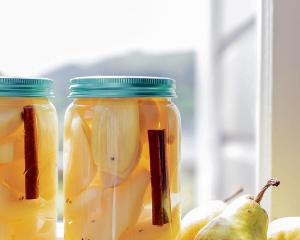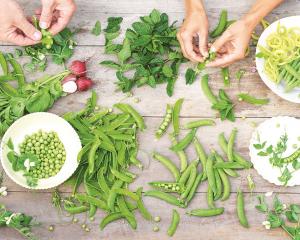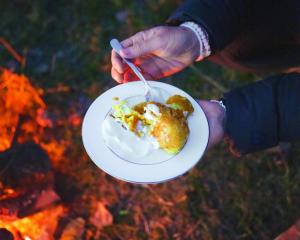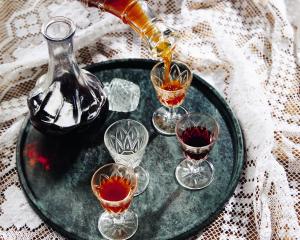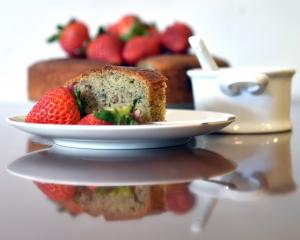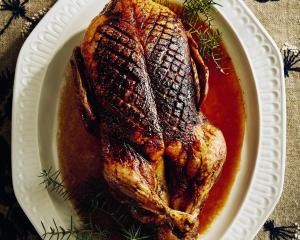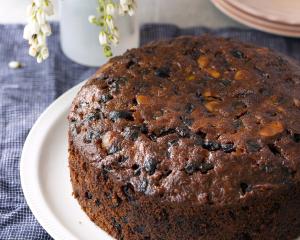
Nothing says ‘‘Christmas is coming’’ quite so cheerfully as the appearance of berries in the garden and even wild ones in the countryside, writes Nadia Lim.

While the berry growers are hitting their straps just down the road from us, right here around the farm’s streams and in our garden, redcurrants, gooseberries and strawberries are bursting into show.
The currants look so festive along the fence line and, because they need a long, cold winter to fruit at their best, I’ve decided to forgive and (try to) forget the endless Central Otago winter of 2022.
We’re fortunate to have lots of space but if it is at a premium at your place, you can also grow berries in large containers such as a half wine barrel. Take cuttings from the suckers of a bush in spring and plant directly in the ground or in pots to grow on before transplanting.
With so many gatherings on the horizon, it is useful to have a recipe repertoire that makes this festive fruit the star of the show.
Of course, just tossing a few fresh berries in a bowl, with something indulgent such as mascarpone served alongside, does the trick, but I’d like to share two berry-licious breakfast favourites that get summer days off to a good start. Wishing you all a deliciously relaxed holiday with your family and friends.
Nga mihi nui, Nadia
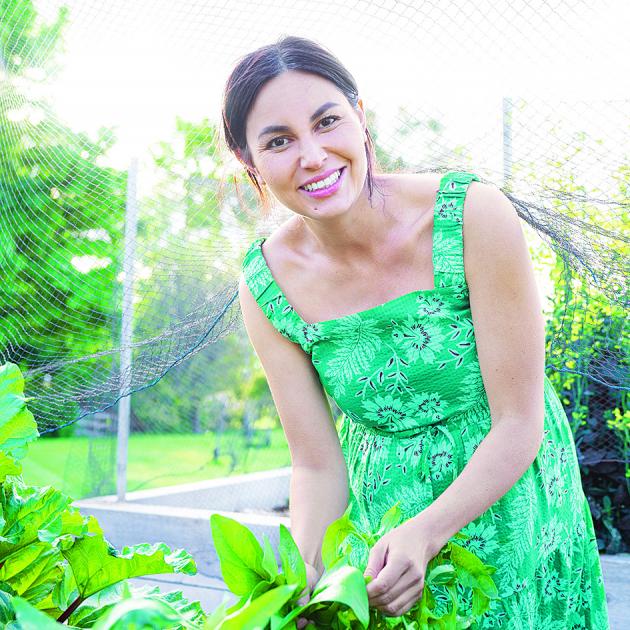
Growing berries
Choose a roomy container, as these ramblers require plenty of toe space for root development. They have a relatively shallow root system, so a wide container - at least 60cm in diameter - is more important than a deep one. Keeping them contained can be a good idea as the plants cannot sprawl. A half wine barrel is ideal.
If planting in the garden, make sure the soil is free-draining and dig in plenty of compost and a sprinkle of fertiliser. In pots, use a good-quality potting mix with a slow-release fertiliser. Cover plants with netting as soon as the fruit develops or you may lose the lot to birds.
Trailing plants, especially in pots, need something to clamber up. Position a trellis nearby and train the vines upwards. Any stem shooting downwards will root if it encounters soil. Consider a fruit cage or tall netted enclosure to keep canes reined in.
Come again?
Summer-fruiting raspberries fruit on 2-year-old canes; remove these after fruiting and leave the 1-year-old canes to fruit the following year. Autumn-fruiting raspberries fruit on 1-year-old canes. Plants can be cut right back to the ground in late autumn or winter after fruiting. Treat blackberries and boysenberries as summer-fruiting raspberries.
Try these varieties. Raspberries: Tulameen (virtually thornless, ripening in midsummer) and Heritage (harvesting from February to May). Blackberries: Navaho (thornless, ripening mid-December) and Black Satin (thornless, ripening in February). Boysenberries: Tasman (semi-thornless, ripening December to January) and Mapua (semi-thornless, ripening December to January).

Blueberries
Blueberries are not brambles like raspberries, blackberries and boysenberries, but are prolific producers over summer. Most blueberries are partially self-fertile but do much better when at least two blueberry plants are planted side by side. This is to ensure good cross-pollination and, therefore, good yield.
There are three types of blueberries: southern highbush, suitable for all areas except south of Canterbury, northern highbush and rabbit eye. The last two can be grown in all areas of the country. When planting two blueberry plants, choose blueberries from the same type. That is two northern highbush types or two rabbit eye types.
There are many varieties for each type. Northern highbush: Bluecrop, Dixi, Nui, Puru, Reka; southern highbush: Marimba, Misty, O’Neal, Petite Blue; rabbit eye: Centurion, Climax, Delite, Powder Blue, Tifblue.
Redcurrants
Redcurrants need a long winter chill to initiate flower buds and, therefore, fruit, so they grow best in cooler regions. You’ll be hard-pressed to grow them in the north. If you have the right location, choose from two commonly grown varieties: Gloria de Versailles, an upright vigorous form with large berries, and Myra McKee. Both fruit from December to February.
Plant your redcurrant bushes in moist, well-drained soil in full sun; the berries tolerate partial shade, but you’ll get fewer of them and they won’t be as sweet.

Coconut chai chia puddings with macerated berries

MAKES: 4 SERVES
Prep time: 5 minutes, plus overnight chilling time
8 Tbsp chia seeds
½ tsp ground cinnamon
½ tsp mixed spice
½ tsp Chinese five-spice
1 Tbsp honey or maple syrup
½ tsp vanilla extract
400ml can coconut milk
Macerated berries:
few handfuls of blackberries and blueberries, halved
small handful redcurrants
2 Tbsp honey or maple syrup
½ tsp vanilla extract
Method
Put 2 Tbsp of chia seeds into each of 4 glasses or bowls.
In a bowl or jug, whisk together the spices, honey or maple syrup, vanilla extract, coconut milk and ½ cup of water until combined. Evenly divide the mixture between the glasses (about ½ cup per glass) and stir to combine.
Refrigerate for at least a few hours or overnight until the mixture has thickened.
Put the berries, redcurrants, honey or maple syrup and vanilla extract in a bowl and mix to combine. Set aside for a few hours or overnight.
Serve the puddings topped with berries and any juices.

Festive panettone French toast
with redcurrants & cinnamon cream

Panettone is a sweet brioche bread studded with dried fruit. It is very Italian and very Christmassy.
Chances are you’ll only find it in shops during the holidays, usually in a dome-shaped box.
It makes fantastic French toast, perfect for Christmas or Boxing Day breakfast.
If you can’t find it, not to worry - use brioche bread instead.
MAKES: 4 SERVES
Prep time: 10 minutes
Cook time: 20 minutes
3 free-range eggs
¾ cup half-and-half or full-cream milk
pinch of mixed spice
finely grated zest of 1 orange
butter for frying
4 slices panettone bread (ideally stale)
juice of 2 oranges
¼ cup maple syrup
To serve:
½ tsp ground cinnamon
1 cup whipped cream
icing sugar, to serve (optional)
Method
Whisk the eggs and milk in a shallow bowl and add in the spices and orange zest.
Melt a knob of butter in a heavy-bottomed frying pan (I use cast iron) on medium heat. When the pan is hot, dip a piece of panettone bread into the milk mixture, then turn to ensure both sides are coated and have absorbed a good amount of liquid.
Place soaked panettone in the sizzling butter in the pan and cook for a few minutes on each side until golden brown. Move to a plate and continue with more butter and the remaining panettone and milk mixture.
When you have finished cooking all the panettone, wipe out the pan and return it to the heat. Add the orange juice and maple syrup and let it bubble for a minute or so to reduce a little. Pour into a small serving jug or bowl.
Fold the cinnamon into the whipped cream.
To serve, divide the French toast between plates, drizzle with orange maple syrup, top with cinnamon cream and redcurrants, and dust with icing sugar (if using).




